You’ve heard New Mexico’s skies are a gateway to cosmic wonders, promising some of the best stargazing experiences.
Yet, finding the perfect spot with clear skies can be daunting, leaving you staring at maps instead of stars.
Fear not, for in this article, I will guide you to the prime locations and times for unmatched celestial views in New Mexico, ensuring your next stargazing adventure is genuinely out of this world.
Recommended For You
Understanding Stargazing in New Mexico
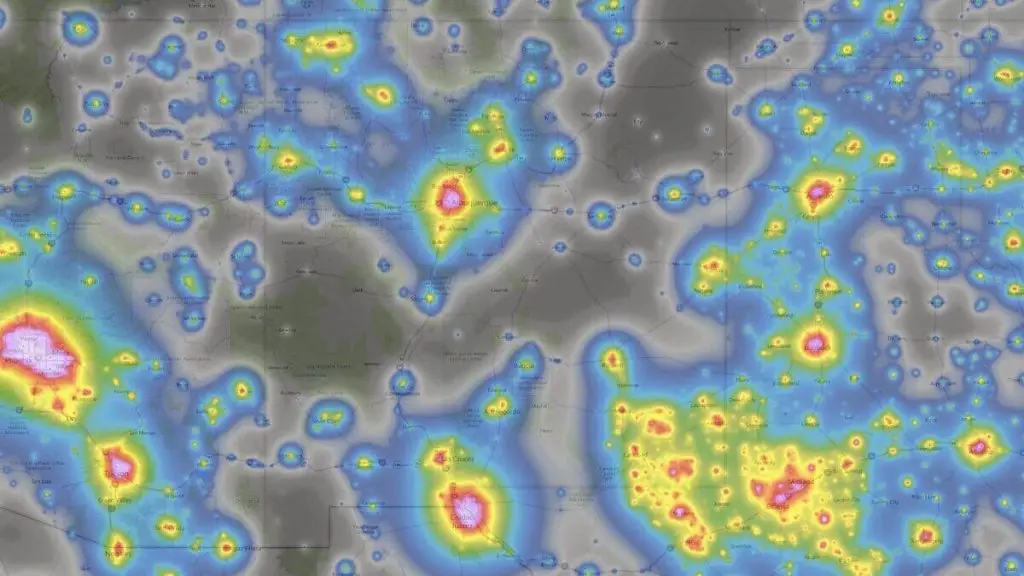
In New Mexico, you’re in for a stellar experience. On my first night in New Mexico, the sheer number of stars took my breath away. The high elevation, dry climate, and low light pollution set the stage for breathtaking stargazing. You’ll find many perfect spots for looking up and losing yourself in the stars.
What’s the right time to enjoy the best stargazing in New Mexico?
- Spring and Fall: Enjoy clear skies and stable weather for superb views. During Fall, I’ve witnessed the most vibrant starry nights, especially in the heart of the desert.
- Summer and Winter: Still good, but come prepared for less predictability.
Choosing Your Gear
Bring binoculars or a telescope to get up close to the moon, planets, and galaxies. Always check the rules for using equipment in your stargazing spot.
Maximize Your Stargazing Trip: Quick Tips
- Moon Phases Matter: Avoid full moons to see more stars. On a new moon night, the Milky Way’s band has been so clear it’s like a celestial highway across the sky.
- Dress Smart: Layers are your friend in the desert’s changing temps. Layering up has saved my stargazing adventures from unexpected chills more times than I can count.
- Darkness is Key: Give your eyes 30 minutes to adjust to the dark.
- Use Star Charts or Apps: They’ll help you spot constellations and planets.
Local Astronomy Programs
New Mexico’s full moon hikes, Petroglyph tours, and university events add a rich layer to your sky-watching. These offer expert insights and can make your experience even more enchanting.
Ready for Magic?
New Mexico’s night sky is waiting for you. Trust me, the New Mexican sky is an endless canvas that never fails to surprise and delight. With the right time of year, some prep, and these tips, you’re all set for an incredible celestial journey.
Read my article to learn about the Milky Way Season in New Mexico

Free Google Map of the Best Stargazing in New Mexico
Here’s your free Google Map of the Best New Mexico Stargazing Spots.

30 Best Stargazing Spots in New Mexico
New Mexico is a stargazer’s paradise, with 30 locations offering crystal-clear views of the night sky. I explain in detail about each one immediately after this list.
Top 30 Stargazing Spots in New Mexico:
- Aztec Ruins National Monument
- Bandelier National Monument
- Bisti-De-Na-Zin Wilderness Area
- Bosque del Apache Wildlife Refuge
- Capulin Volcano National Monument
- Carlsbad Caverns National Park
- Cerrillos Hills State Park
- Chaco Culture National Historical Park
- City of Rocks State Park
- Clayton Lake State Park and Dinosaur Trackways
- Cosmic Campground International Dark Sky Sanctuary
- Dark Skies New Mexico
- El Malpais National Monument
- El Morro National Monument
- El Rito Observatory (Northern New Mexico Community College)
- Fort Union National Monument
- Frank T. Etscorn Campus Observatory
- Ghost Ranch
- Gila Cliff Dwellings
- Hyde Memorial State Park
- Magdalena Ridge Observatory
- Oliver Lee Memorial State Park
- Rio Grande del Norte National Monument
- Robert H. Goddard Planetarium
- Salinas Pueblo Missions National Monument
- University of New Mexico Campus Observatory
- Valle de Oro National Wildlife Refuge
- Valles Caldera National Preserve
- Very Large Array (National Radio Astronomy Observatory)
- White Sands National Park
Aztec Ruins National Monument
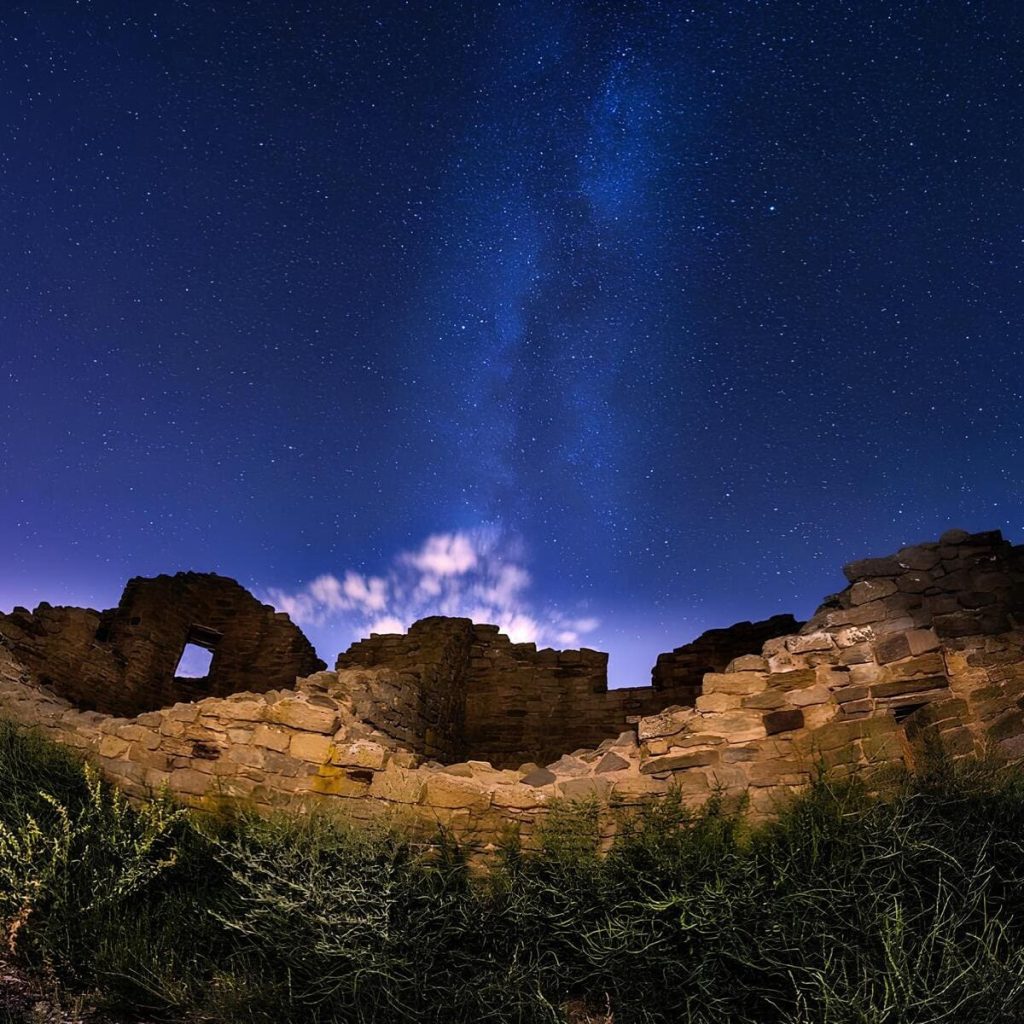
Head over to Aztec Ruins National Monument for a stargazing session that you’ll remember. You can find this gem in northwestern New Mexico, close to Farmington. Here’s why it’s a favorite among stargazing enthusiasts:
- Dark Skies: Enjoy clear views thanks to its low Bortle Class rating.
- Astronomy Programs: From June to August, the monument offers astronomy programs. You’ll have the chance to peer through telescopes and uncover the night sky’s wonders.
- Solstice Alignments: The ruins align with the sun during solstices and equinoxes, adding a unique touch to your visit. Mark your calendar for these summer months. That’s when the monument comes alive with night sky events that celebrate both the ancient and the astronomical.
FREE STARGAZING CHECKLIST
My 5-page Stargazing Checklist will enhance your astronomical observations.
Follow this free checklist to navigate the night sky with confidence, clarity, and a sense of preparedness for a rewarding stargazing experience.

Bandelier National Monument
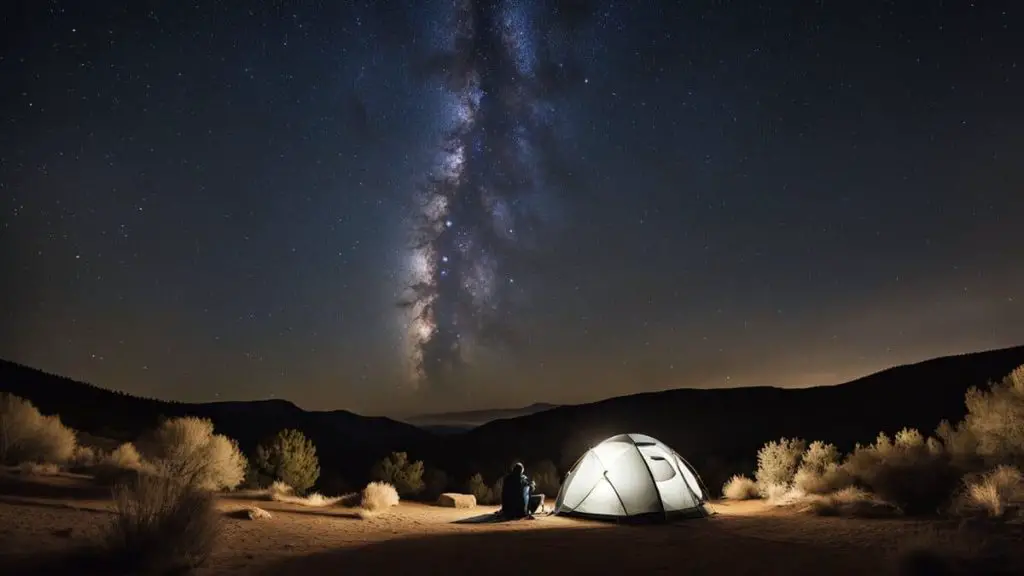
Just a drive from Santa Fe, Bandelier National Monument offers a stargazing experience as grand as its canyons and mesas. Here’s what you’ll find when you visit:
- Natural Amphitheater: The park’s terrain forms a natural bowl, perfect for night sky viewing.
- Cultural Connection: Like Aztec Ruins, the ancestral Puebloan sites connect you to the ancient skywatchers.
- Unique Stargazing Experience: Bandelier National Monument offers exceptional night sky programs throughout the year. The vast wilderness and historical ambiance provide an unforgettable stargazing experience. They offer ranger-led night walks and moonlight hikes, blending nature, culture, and astronomy.
Bisti-De-Na-Zin Wilderness Area

In the heart of the high desert, the Bisti-De-Na-Zin Wilderness Area awaits. This is a land of rock formations and fossils where the night sky opens up for those who seek solitude and stars.
Key highlights for stargazers:
- Untouched Dark Skies: Far from light pollution, its dark skies are perfect for stargazing.
- Surreal Landscape: The wilderness area’s dramatic scenery becomes even more otherworldly under the stars.
- Fossil Hunting: During the day, you can explore and look for fossils, adding a unique twist to your stargazing trip.
Bosque del Apache Wildlife Refuge
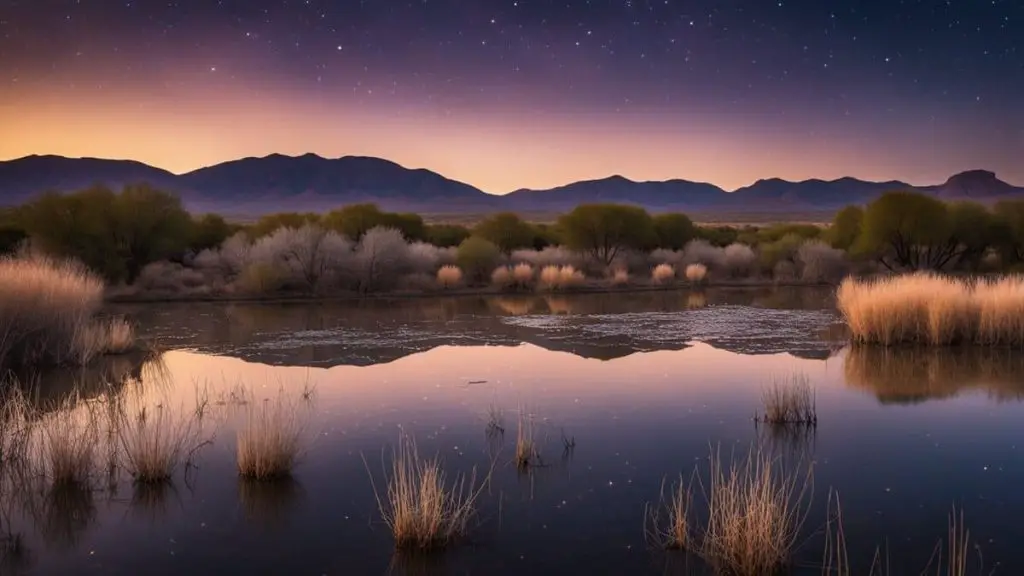
Birds by day and stars by night—Bosque del Apache Wildlife Refuge is a stargazer’s delight just south of Socorro. Here’s what to know:
- Wildlife and Stars: After a day of birdwatching, the night offers a sky brimming with stars.
- Events: They occasionally host stargazing events, so watch their calendar.
- Accessibility: Easily accessible, it’s a convenient spot for evening stargazing sessions.
Capulin Volcano National Monument
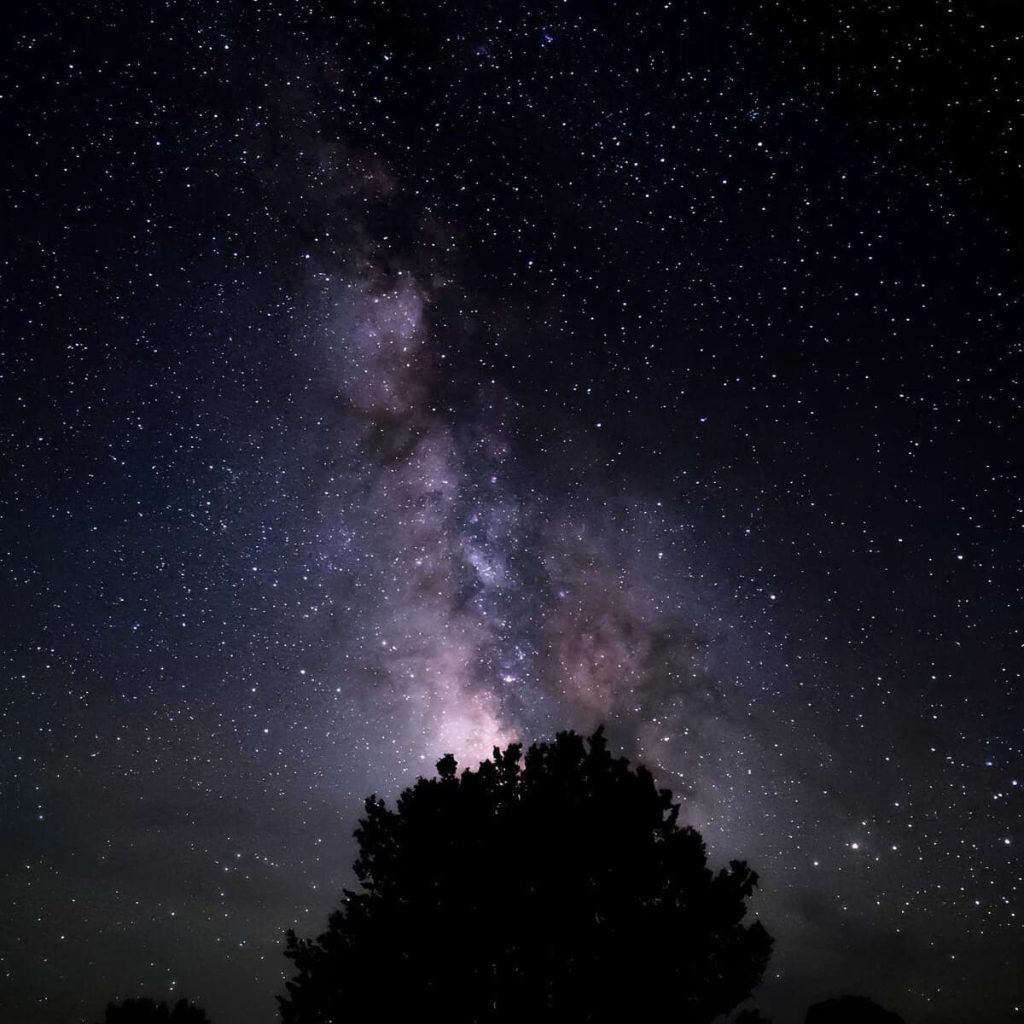
Recognized as a Gold-Tier International Dark Sky Park by the International Dark-Sky Association (IDA), Capulin Volcano National Monument provides year-round observation opportunities at its Night Sky Observation station.
Consider these points for your visit:
- Elevated Views: The volcano’s rim provides an elevated platform for stargazing.
- Dark Skies: Its remote location means very dark skies and a Bortle Class rating conducive to star viewing.
- Volcano Rim Trail: Hike the rim trail during the day for breathtaking views and then settle down for a night of stargazing.
- Unique Stargazing Experience: It has been deemed a gold-tier Dark Sky Park by the International Dark Sky Association, indicating it has little light pollution and is an excellent stargazing location.
Carlsbad Caverns National Park

Dive underground during the day and gaze upwards at night at Carlsbad Caverns National Park, located in the Chihuahuan Desert.
Here’s why stargazers flock here:
- Underground Wonders: The caverns are a natural marvel to explore when the sun is up.
- Starry Nights: Once night falls, the park’s new Dark Sky status promises excellent stargazing opportunities.
- Unique Stargazing Experience: The park hosts several night sky events like NASA Star Parties, where visitors can explore the night sky through powerful telescopes. Park rangers assist in pointing out some of the harder-to-find objects in outer space during these events.
Cerrillos Hills State Park

Cerrillos Hills State Park, a short drive from Santa Fe, is a treasure for day hikers and night sky watchers alike.
What you’ll love about this place:
- Trails and Tales: The park has numerous hiking trails with mining history.
- Night Sky Beauty: With minimal light pollution, you’ll enjoy vivid stargazing opportunities.
- Unique Stargazing Experience: The hills in the park stand nearly 7,000 feet above sea level, providing an escape from city lights for a closer look at the night sky. Occasional stargazing events are held here.
Chaco Culture National Historical Park
Next up is Chaco Culture National Historic Park. This site is not just about the ancient ruins; it’s a stargazer’s paradise.
Here’s what’s in store for you:
- Unmatched Darkness: As a Gold-tier International Dark Sky Park, the park hosts night sky programs and telescope viewing sessions from April through October. It offers an outstanding stargazing experience due to its natural nighttime darkness and reduced light pollution.
- Stargazing Events: Time your visit for one of their “Stars Over Chaco” events, which run throughout the warmer months, offering a chance to join astronomers for night sky observations.
- Ancient Alignments: Witness how the buildings align with celestial events, particularly during solstices.
City of Rocks State Park
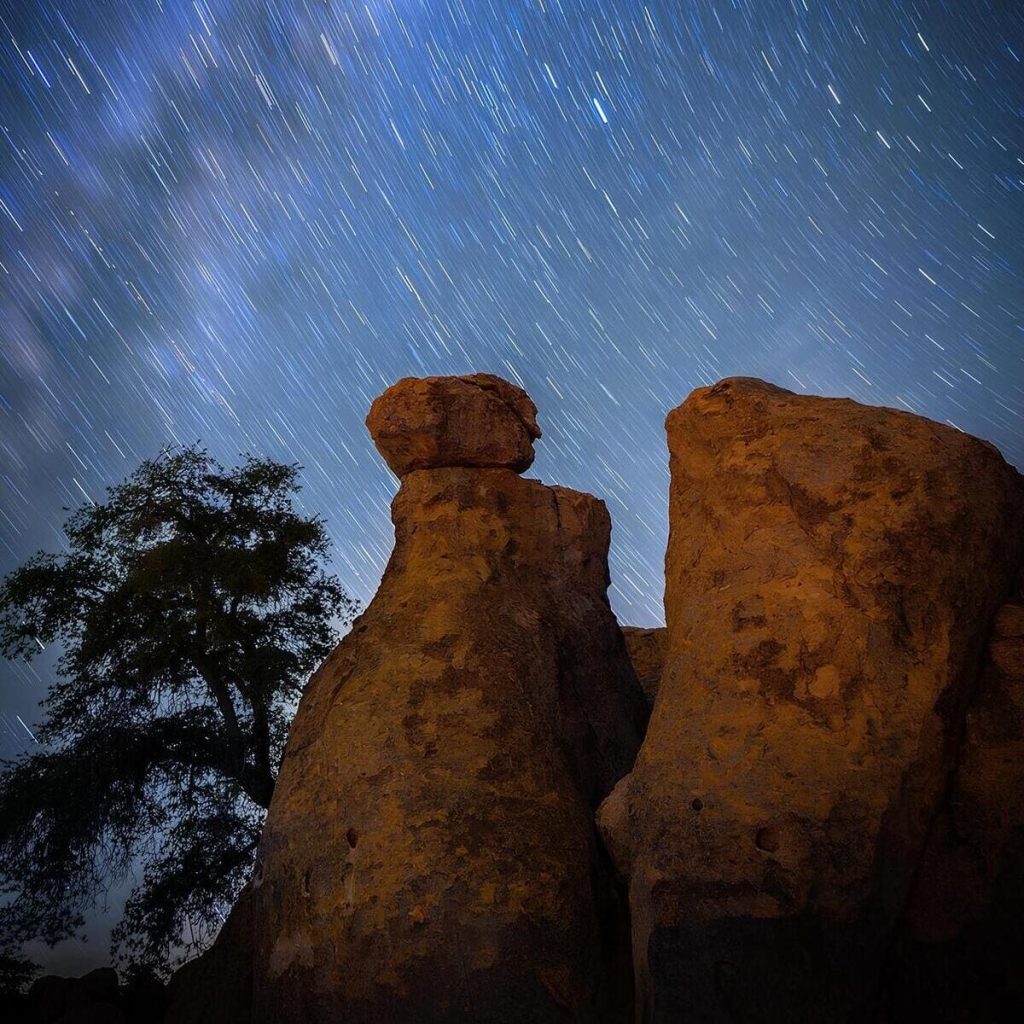
City of Rocks State Park, with its volcanic rock formations, is as good for stargazing as for imagination.
Key points for your stargazing trip:
- Rocky Silhouettes: The rocks create dramatic silhouettes against the night sky.
- Bortle Class: It offers a dark sky environment conducive to stargazing.
- Unique Stargazing Experience: The park houses its observatory with a 14″ Meade Telescope operated by solar power. It hosts monthly Star Parties in collaboration with the National Public Observatory.
Clayton Lake State Park and Dinosaur Trackways

Clayton Lake State Park isn’t just for dinosaur track enthusiasts; it’s a haven for stargazers.
What you need to know:
- Star Walk: The park’s Star Walk area and observatory offer a guided stargazing experience. The Star Walks are most active from spring to Fall, coinciding with the best stargazing conditions.
- Dark Sky Sanctuary: It was the first park in New Mexico to earn the International Dark Sky Park designation in 2010, making it one of the best spots in the nation for stargazing due to its clear skies and low light pollution.
- Dinosaur Tracks: By day, explore over 500 dinosaur footprints preserved on the lake’s spillway.
Cosmic Campground International Dark Sky Sanctuary
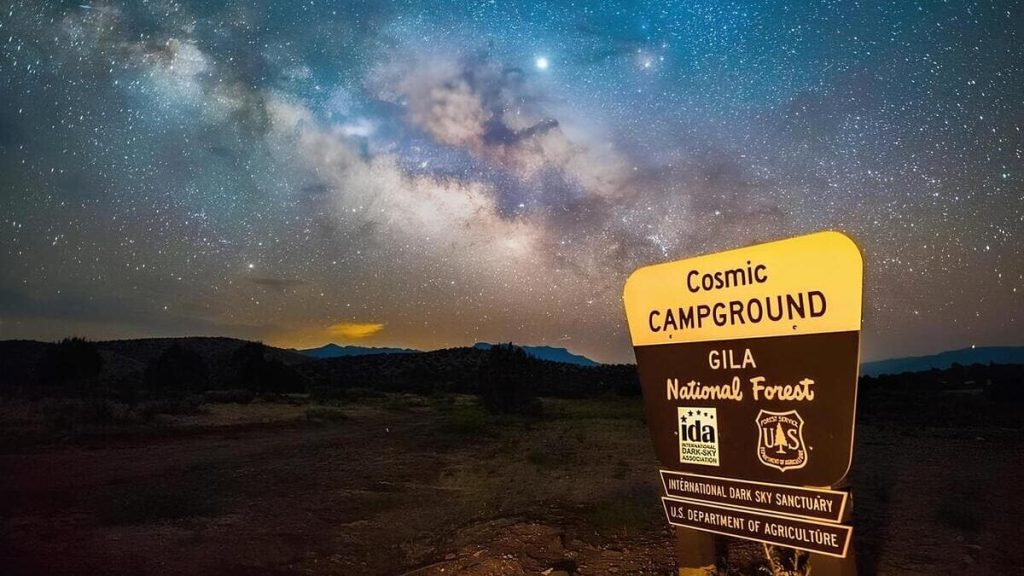
For a stargazing experience that’s out of this world, set your sights on Cosmic Campground. It’s nestled within the Gila National Forest, where the sky meets the horizon in an uninterrupted canvas.
What sets it apart:
- Unique Stargazing Experience: As the first International Dark Sky Sanctuary on National Forest System lands in North America and one of only 14 worldwide, it offers unparalleled night sky views with little to no light pollution.
- Unobstructed Views: With a 360-degree, unobstructed view of the sky, it’s a stargazer’s dream.
- Public Use: No fees or reservations are required—this public land is open for your spontaneous stargazing adventure.
- Facilities: The site includes an observing area, four pull-through RV spaces, four telescope pads, and a vault toilet. However, there’s no electricity, water, or trash pick-up, so visitors must pack it in and out.
Read my dedicated article about the Cosmic Campground Dark Sky Sanctuary.
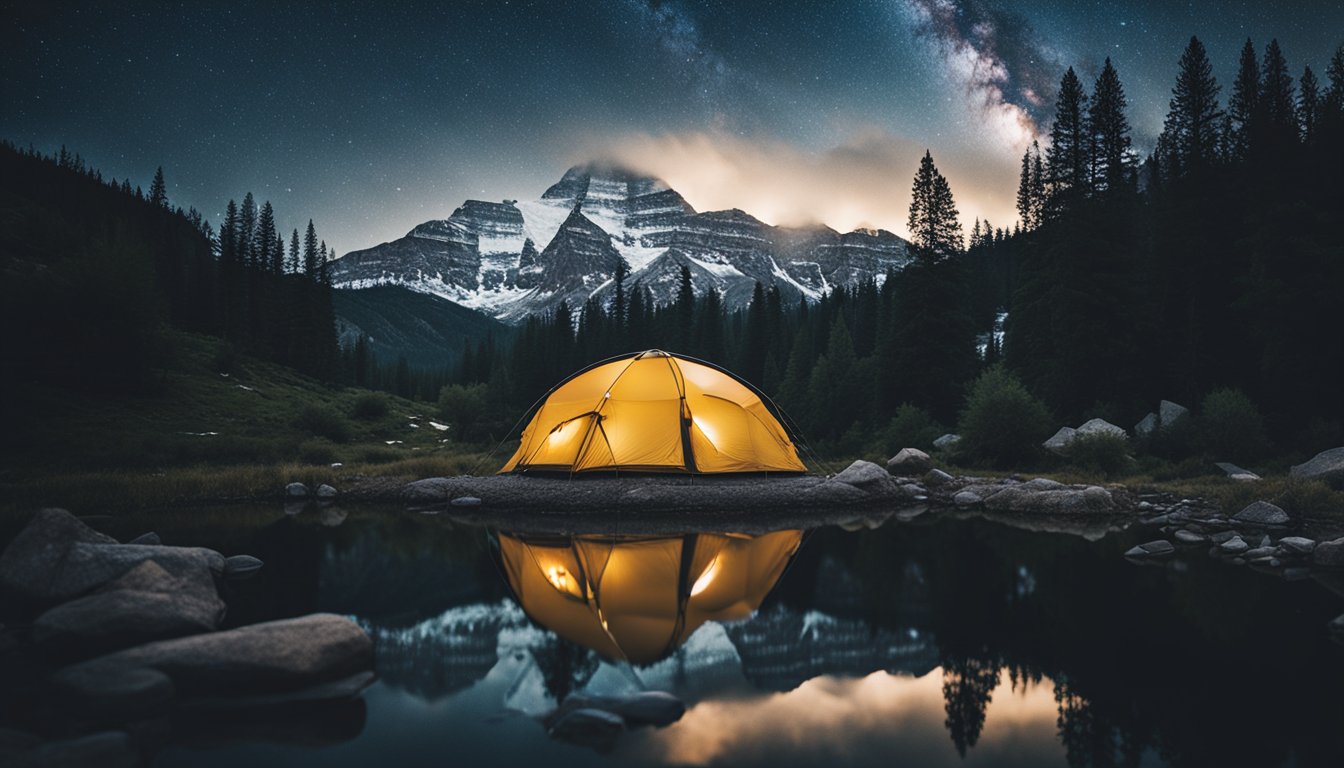
Dark Skies New Mexico
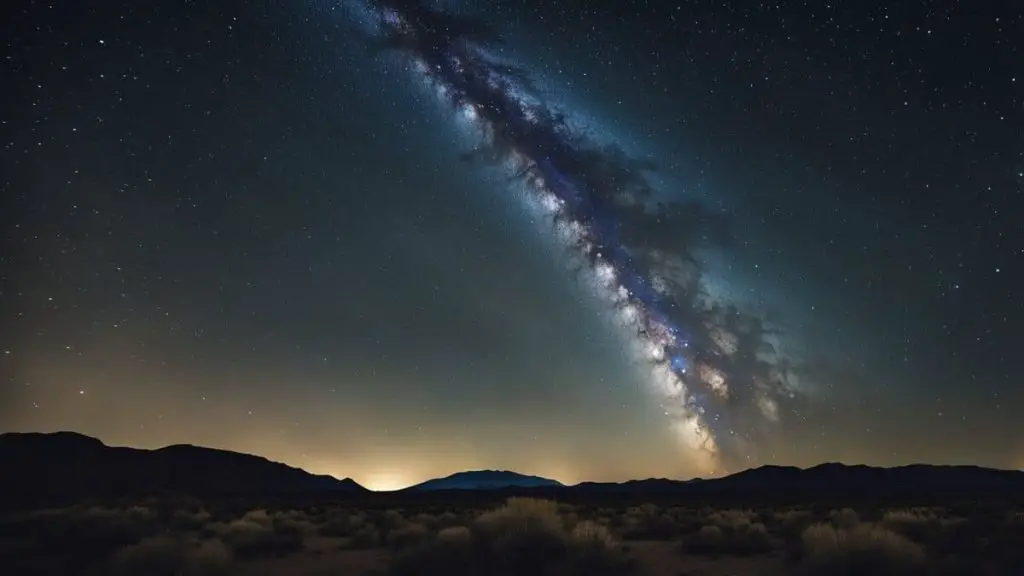
Nestled in the secluded “bootheel” region of New Mexico, near Animas, Dark Skies New Mexico is a sanctuary for stargazers and astrophotographers.
Why it’s a stargazing haven:
- Unique Stargazing Experience: This remote area is frequented by serious astrophotographers, universities, and astronomers for its virtually non-existent light or air pollution, making it a prime location for remote telescope hosting and world-class astrophotography.
- Remote Location: Its seclusion in the state’s southwestern corner ensures an escape from light and air pollution.
- Expert Gatherings: The area is a gathering point for universities and astronomers, thanks to its optimal conditions for remote telescope hosting.
El Malpais National Monument

El Malpais National Monument’s name means ‘the badlands,’ but for stargazers, it’s anything but.
Why you’ll enjoy the night sky here:
- Rugged Backdrop: The lava flows and sandstone cliffs offer a unique night sky viewing backdrop.
- Darkness: The monument’s isolation ensures dark skies for optimal stargazing.
- Unique Stargazing Experience: The El Calderon and Lava Falls Trailheads offer the best night sky viewing within the monument. The park has recently opened its popular trailhead parking lots for night sky purposes like astronomy, photography, and stargazing. Amidst the black lava rock that covers much of the surface, the dark night skies offer a unique stargazing experience.
- Guided Experiences: Rangers offer night sky programs, sharing insights into the stars and constellations.
El Morro National Monument
El Morro National Monument is a historical site by day and a stargazing venue by night.
Here’s what’s on offer:
- History Under the Stars: Explore ancient inscriptions and watch the stars in the same spot.
- Unique Stargazing Experience: Recognized as an International Dark Sky Park, El Morro offers scheduled stargazing events where attendees can partake in a 30-45 minute ranger program, followed by a constellation tour and telescope viewing.
- Night Sky Events: They host occasional night sky events, perfect for an evening under the stars.
El Rito Observatory (Northern New Mexico Community College)
El Rito Observatory is a little-known gem, part of the Northern New Mexico Community College. It’s an educational and observational hub where the stars are the students, and you’re the observer.
Here’s why it’s special:
- Unique Stargazing Experience: El Rito Observatory hosts monthly “dark night” star parties, likely a draw for local stargazing enthusiasts and students.
- Educational Programs: The observatory offers programs that are as informative as they are awe-inspiring.
- State-of-the-Art Telescope: With their telescope, you get to see the finer details of the night sky.
- Community Events: They often have community nights, where local astronomers share their knowledge with you.
Fort Union National Monument
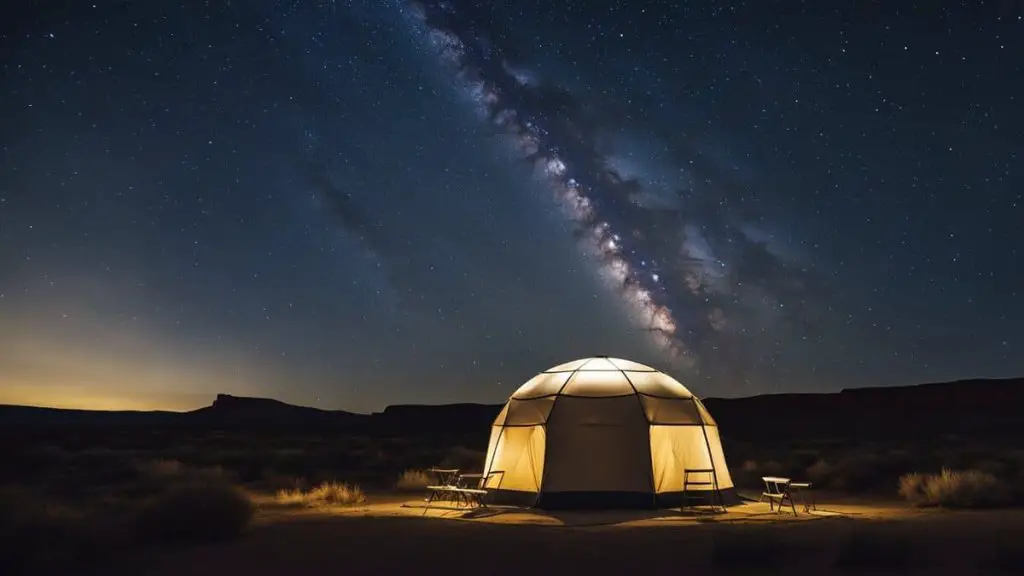
Fort Union National Monument, once a bustling military fort, now stands as a sentinel under the New Mexico sky.
What you’ll find here:
- Unique Stargazing Experience: Certified as an International Dark Sky Park, Fort Union National Monument resumes its star parties, providing an ideal place for observing a natural dark sky amidst the solitude, remoteness, and arid landscapes. The sky over the high prairie gives way to the glow of celestial bodies unaffected by light pollution after sunset.
- Storied Ruins: Explore the ruins during the day and stay as dusk unveils a celestial showcase.
- Star Parties: They host star parties where you can join fellow enthusiasts for a night of discovery.
- Secluded Location: The monument’s remote location ensures a night sky without light pollution.
Frank T. Etscorn Campus Observatory
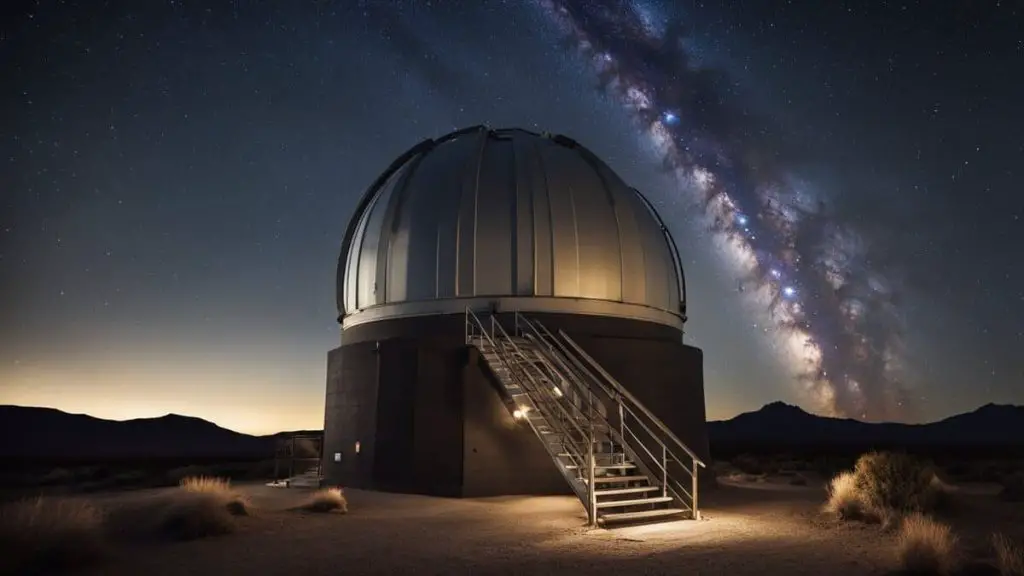
Located on the campus of New Mexico Tech in Socorro, the Frank T. Etscorn Campus Observatory brings the cosmos closer to home.
Why it’s a must-visit:
- Unique Stargazing Experience: It hosts the annual Enchanted Skies Star Party (ESSP), along with many public and private star parties throughout the year. Every first Saturday of the month, you are invited to a Guided Night Sky Stargazing event.
- Public Viewings: The observatory opens its doors to the public for weekly viewings.
- Educational Experience: Learn about the night sky from knowledgeable students and staff.
- Accessible Astronomy: It’s a great way to enjoy astronomy without venturing too far from the city.
Ghost Ranch
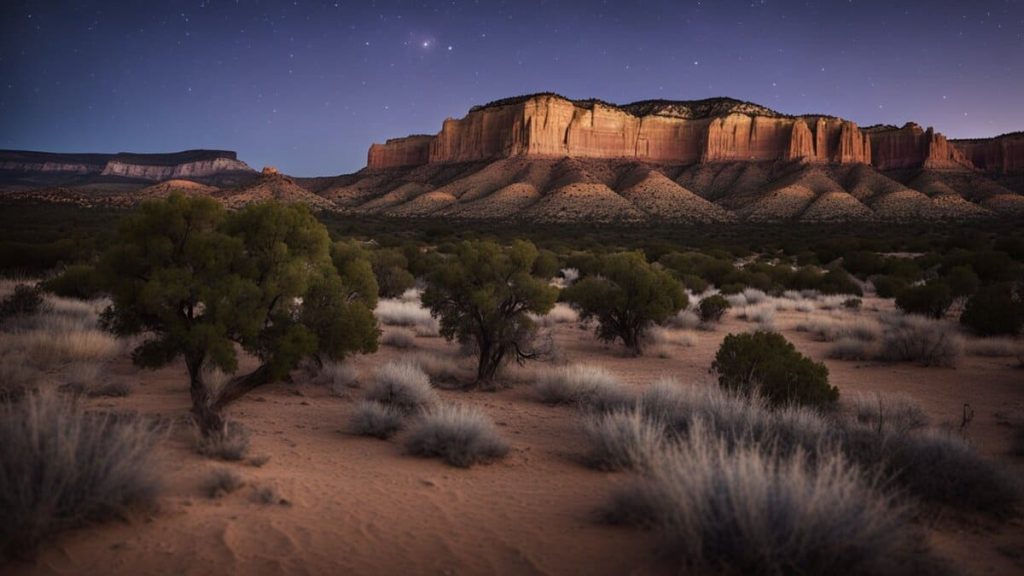
Ghost Ranch, with its striking red and yellow cliffs, is as captivating at night as it is during the day.
Here’s what awaits you:
- Stunning Landscapes: The landscapes that inspired Georgia O’Keeffe offer dramatic views under starlight.
- Night Programs: The ranch offers night programs that include stargazing sessions.
- Diverse Activities: During the day, enjoy workshops, horseback riding, and hiking before settling down for stargazing.
Gila Cliff Dwellings
At Gila Cliff Dwellings, history and the cosmos connect. Nestled in the Gila Wilderness, this site offers a glimpse into the lives of the Mogollon people and their celestial canvas.
- Unique Stargazing Experience: With its remote setting, Gila Cliff Dwellings National Monument provides a 360-degree unobstructed view of the night sky, offering stellar stargazing opportunities.
- Historical Insights: Tour ancient dwellings by day.
- Stargazing Serenity: At night, enjoy serene skies far from light pollution.
- Ranger Programs: Attend ranger-led stargazing events to deepen your understanding of the sky.
Hyde Memorial State Park
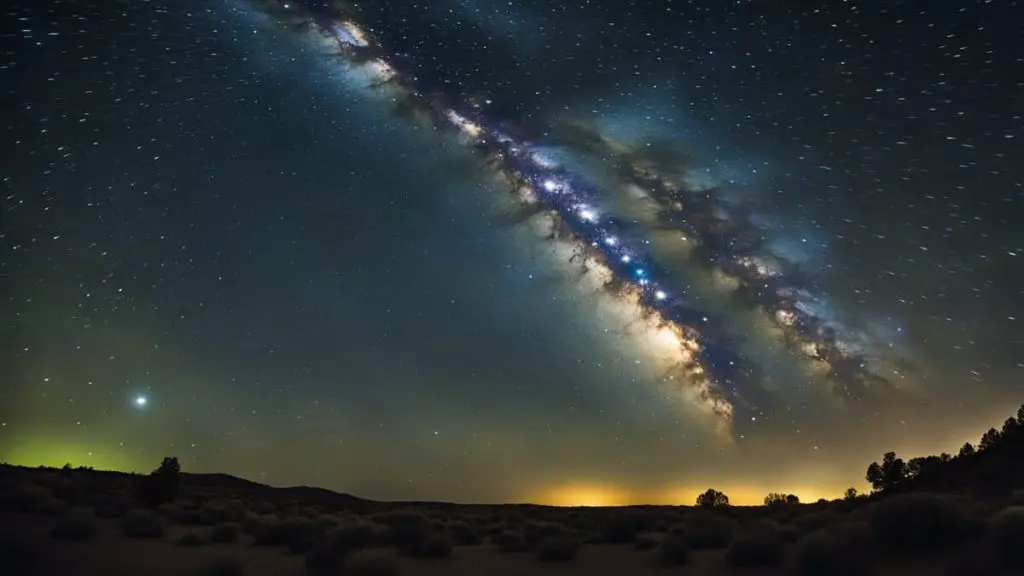
Just north of Santa Fe, Hyde Memorial State Park is a natural retreat that offers more than just daytime activities.
- Unique Stargazing Experience: Being New Mexico’s first state park, it is a haven for stargazers due to its clear night skies, free from light pollution, ensuring an optimal stargazing experience.
- Elevated Views: Located in the Sangre de Cristo Mountains, you’ll have an elevated stargazing position.
- Dark Nights: The park’s higher elevation means darker skies and brighter stars.
- Night Hikes: Join in on night hikes for a different kind of stargazing adventure.
Magdalena Ridge Observatory
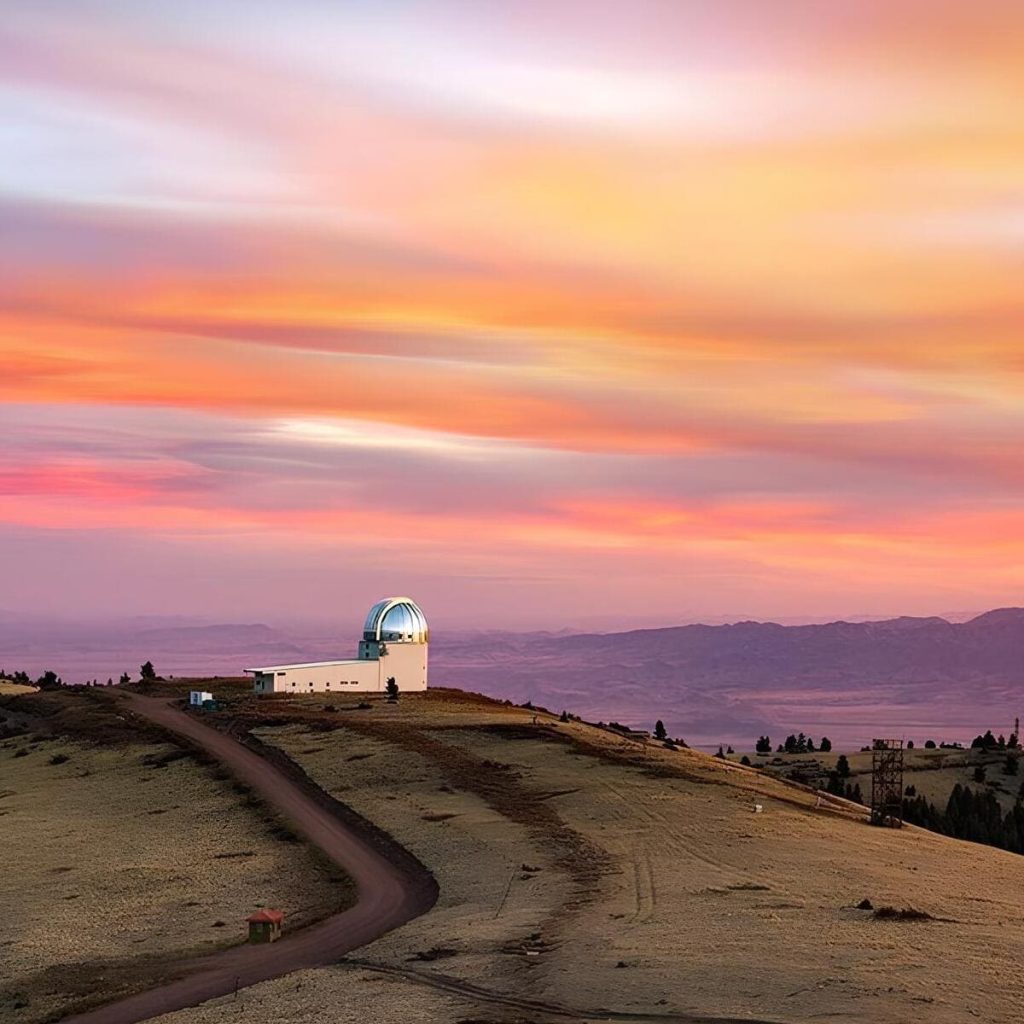
High atop the Magdalena Mountains, the Magdalena Ridge Observatory stands as a beacon for astronomers and stargazers.
- Unique Stargazing Experience: The observatory hosts numerous star parties throughout the year for community members. You can join on the first Saturday of every month, attend the annual Enchanted Skies Star Party, or become a member of Friends of MRO to schedule your own private star party.
- Professional Research: This facility conducts serious astronomical research.
- Public Events: They open their doors for public star parties and events.
- Stellar Views: At 10,600 feet, you’re nearly touching the stars.
Oliver Lee Memorial State Park
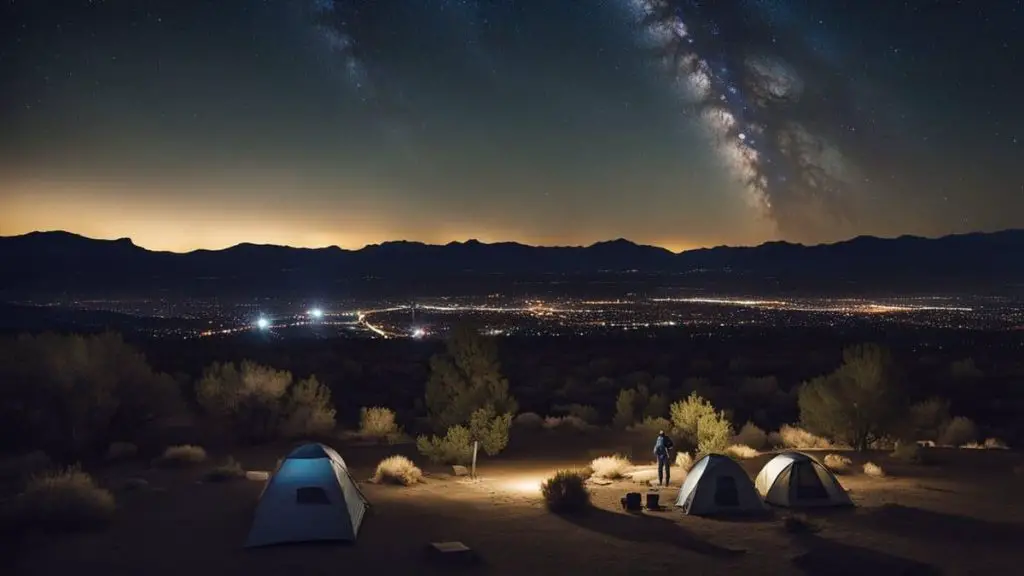
Oliver Lee Memorial State Park, at the base of the Sacramento Mountains, offers a stargazing experience that’s both accessible and impressive.
- Unique Stargazing Experience: The park is known for its incredible views and star gazing opportunities. A local astronomy club, the Amateur Astronomers Group of Alamogordo, often hosts stargazing events here.
- Desert Skies: The park features clear desert skies perfect for astronomy.
- Historical Site: Explore the 19th-century ranch house and learn about local history during the day.
Rio Grande del Norte National Monument
The Rio Grande del Norte National Monument provides a vast landscape where the river carves through the earth, and the sky opens wide for stargazers.
What makes it a great stargazing spot:
- Expansive Views: The wide-open spaces along the Rio Grande offer expansive views of the night sky.
- Natural Darkness: The monument’s distance from urban light pollution means darker nights for your stargazing pleasure.
- Daytime Adventures: Enjoy rafting or hiking during the day before settling down for an evening of star-watching.
Robert H. Goddard Planetarium
Located within the Roswell Museum and Art Center, the Robert H. Goddard Planetarium is a hub for educational and celestial exploration.
Why you should visit:
- Unique Stargazing Experience: The planetarium hosts numerous astronomy-related events and educational programs, offering an indoor stargazing experience. They often have star and laser shows that educate visitors about the night sky, planets, stars, and other celestial phenomena.
- Planetarium Shows: The planetarium runs educational shows that bring the cosmos to life.
- Interactive Experience: Get hands-on with astronomy through their interactive exhibits.
- Space History: Learn about Robert H. Goddard, the father of modern rocketry, and his connections to the stars.
Salinas Pueblo Missions National Monument

Salinas Pueblo Missions National Monument tells the story of a time when cultures met under the New Mexican sky.
Stargazing highlights include:
- Unique Stargazing Experience: Recognized as a dark sky park, Salinas Pueblo Missions National Monument offers exceptional stargazing with organized night sky programs, allowing visitors to explore the heavens amidst the ruins of ancient civilizations.
- Historic Ruins: Walk among the ruins of ancient missions by day.
- Stellar Clarity: At night, the lack of light pollution provides clarity for stargazing.
- Cultural Events: The monument sometimes hosts events that combine cultural history with astronomy.
University of New Mexico Campus Observatory
The University of New Mexico Campus Observatory in Albuquerque opens a window to the stars for students and the public alike.
Here’s what’s waiting for you:
- Public Nights: It’s open every Friday night, offering a chance to stargaze with a 14-inch Celestron Edge HD telescope.
- Academic Setting: Gain knowledge from the astronomy students and faculty who are as passionate about the stars as you are.
- Urban Astronomy: It’s a rare chance to engage with serious astronomy right in the heart of the city.
Valle de Oro National Wildlife Refuge
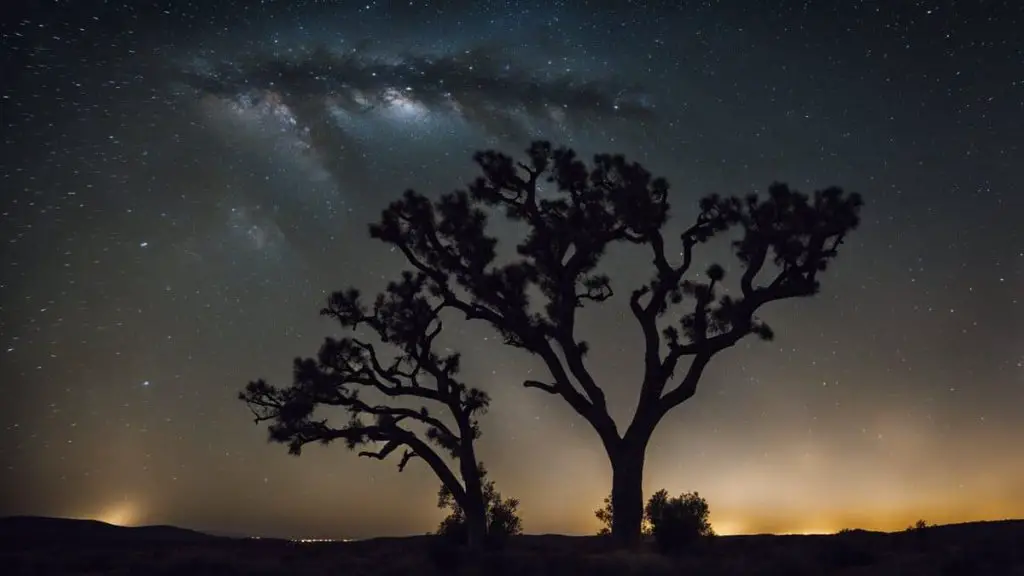
Valle de Oro National Wildlife Refuge is Albuquerque’s hidden stargazing spot, where wildlife by day transitions to starry skies by night.
What you’ll appreciate here:
- Unique Features: Designated as the first Urban Night Sky Place by the International Dark-Sky Association, it’s a recognized site for appreciating the night skies.
- Urban Proximity: It’s the first urban national wildlife refuge in the Southwest, making it an accessible stargazing destination.
- Community Events: The refuge partners with The Albuquerque Astronomical Society for star parties and events like the “Valle de Oro Public Star Party and Bosque Stargazing,” which include sky tours of visible constellations.
- Wildlife and Stars: Enjoy birdwatching during the day and stellar observations after sunset.
Valles Caldera National Preserve
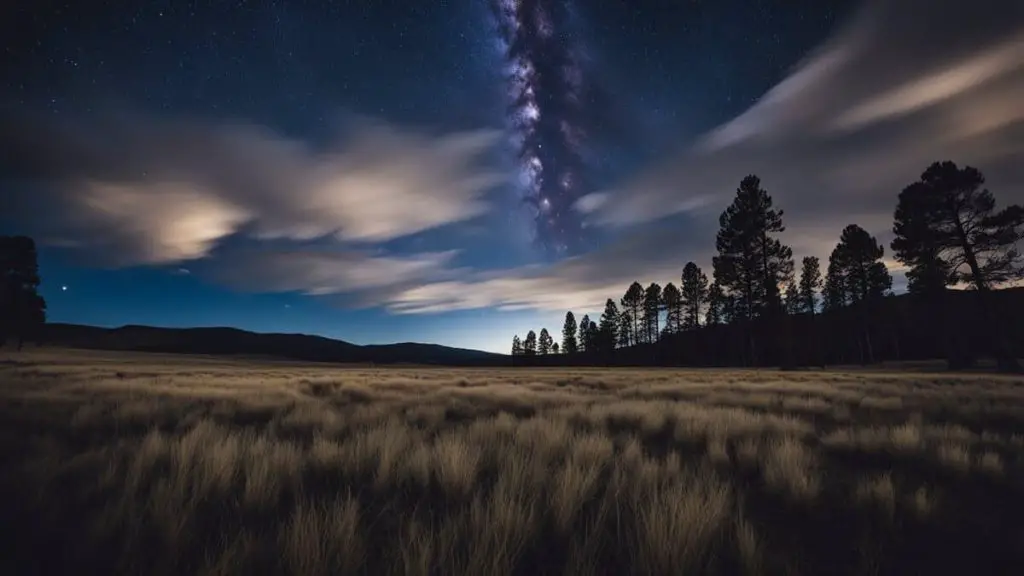
Valles Caldera National Preserve is a massive volcanic crater that’s a natural amphitheater for celestial shows.
Your stargazing checklist:
- Unique Features: Declared an International Dark Sky Park, known for its expansive mountain meadows and stunning views of the night sky, hosts regular night sky programs and activities like full moon hikes.
- Breathtaking Basin: The caldera’s bowl-like shape frames the night sky beautifully.
- Dark Sky Nights: With minimal light pollution, the preserve is an excellent spot for stargazing.
- Guided Night Hikes: They offer night hikes where the stars are the highlight.
Very Large Array (National Radio Astronomy Observatory)

The Very Large Array (VLA) isn’t just for scientists; it’s a must-see for anyone curious about the universe. The VLA is known for being a premier astronomical radio observatory with one of the world’s great telescopes, providing a unique experience for stargazing and nightscape photography.
Here’s why it’s fascinating:
- Giant Radio Telescopes: It houses 27 radio antennas in a Y-shaped configuration, each with a diameter of 25 meters (82 feet)
- Visitor Center: The visitor center provides insights into how these telescopes listen to the cosmos.
- Guided Tours: They offer guided tours that explain the science of radio astronomy.
White Sands National Park
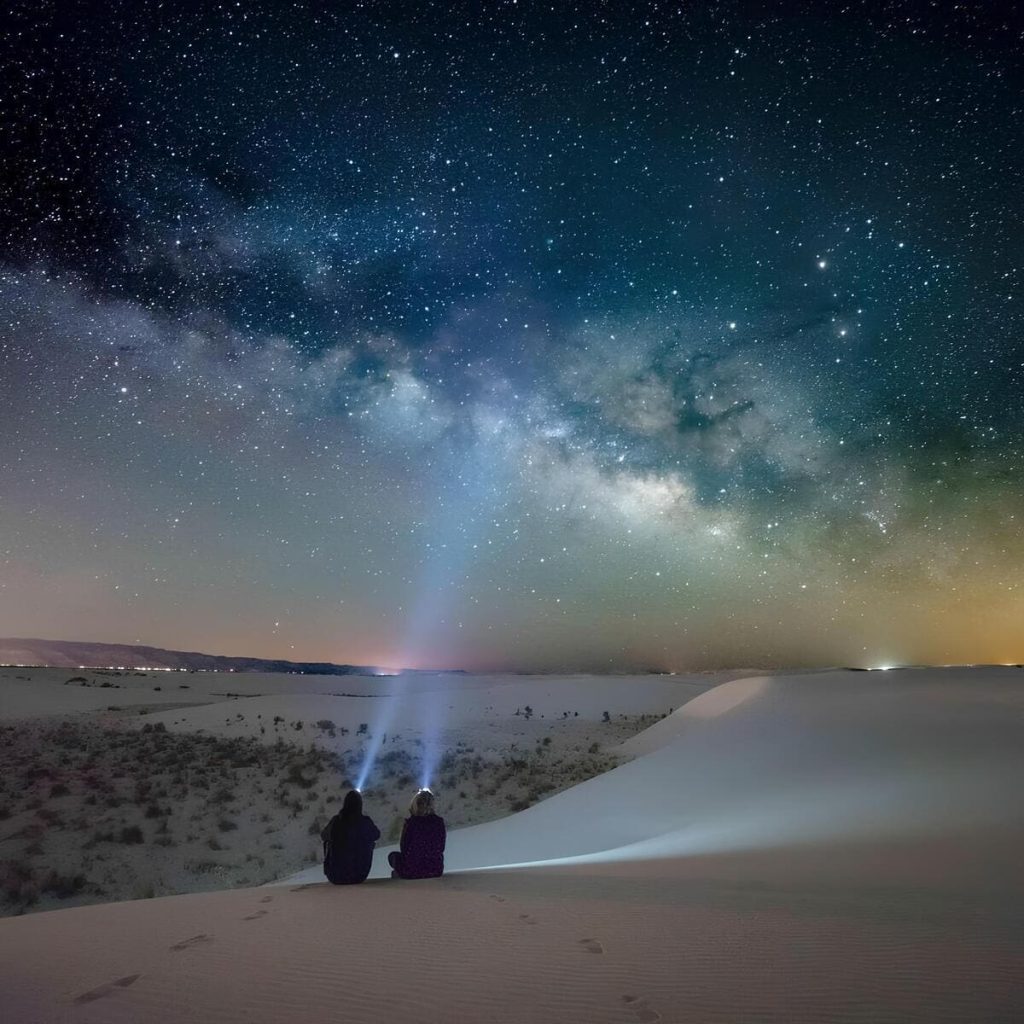
White Sands National Park offers a stargazing experience as dazzling as the glistening gypsum dunes you’ll walk by day.
What’s unique about stargazing here:
- Moonlike Dunes: Known for its vast 275 square miles of wave-like dunes of gypsum sand, offering unobstructed views of southern New Mexico’s night skies.
- Unique Features: With an average of only 27 rainy days per year, it’s conducive for stargazing year-round, with August being an ideal month due to relatively warm nights.
- Clear Conditions: With over 200 clear nights a year, your chances of a perfect stargazing night are high.
Read my dedicated article about White Sands stargazing.
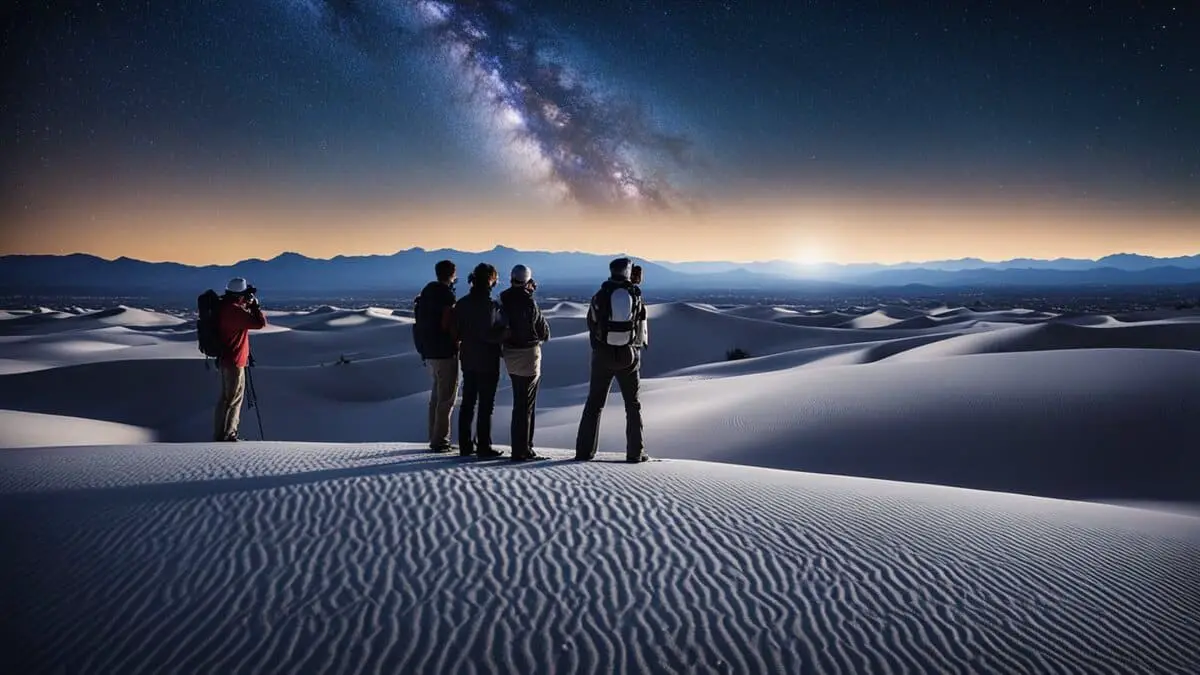
Observational Astronomy Events
Get ready to be amazed by New Mexico’s night skies.
Mark these events on your calendar:
- Enchanted Sky Star Party: A must-see event where you’ll join in on stargazing, insightful talks and hands-on workshops. You’ll dive into night photography and discover the wonders above us.
- Quadrantids Meteor Shower (January 3rd): Don’t miss out! Witness up to 40 shooting stars every hour in an extraordinary celestial show.
- Guided Night Tours: Venture through the International Dark Sky Parks, like Clayton Lake State Park and Capulín Volcano National Monument, with expert rangers leading the way.
- Campus Stargazing: The University of New Mexico opens its observatory to the public for mesmerizing viewings every Friday evening during the school year.
Tips for a Stellar Experience:
- Arrive Early: Grab the perfect spot for your telescope or camera.
- Stay Warm: Nights get chilly, so pack blankets and dress in layers.
- Preserve Your Night Vision: Use red-filtered flashlights to adjust your eyes to the dark.
Under the New Mexico Skies
Set up camp and stargaze at dark sky parks, where the Milky Way shines bright, and the constellations tell stories.
- Explore Ancient History: Places like Bandelier National Monument invite you to walk in the footsteps of the Ancestral Pueblo people.
Ranger-Led Night Sky Programs
These programs are your gateway to the stars. Listen to tales of faraway galaxies and the ancient people who once gazed upon them right under New Mexico’s enchanting night skies.
Historical Archaeoastronomy in New Mexico
Step into the Past under the Stars
Discover the ancient Pueblo’s celestial legacy at these historic sites:
- Chaco Culture National Historical Park (Chaco Canyon): Marvel at buildings aligned with celestial bodies. Participate in astronomy programs and peer through telescopes to see the constellations as the ancient Puebloans did.
- Bandelier National Monument: Amidst ancestral Pueblo ruins, watch the Milky Way’s grandeur unfold above you, merging past with present in a breathtaking display.
Additional Historical Stargazing Spots:
- Clayton Lake State Park and Dinosaur Trackways: Combine your love for stars and dinosaurs. Gaze at the night sky with ancient footprints beside you.
- Valles Caldera National Preserve: In the heart of the Jemez Mountains, the open sky welcomes you to explore celestial wonders.
Remember This:
When you’re out stargazing at these sites, you’re joining an ancient tradition. You see the same stars that guided and inspired the Pueblo people throughout the centuries.
Practical Tips for Stargazing
When planning your stargazing adventure in New Mexico, there are some tips you should keep in mind to get the most out of your experience:
Find the Perfect Spot
- Opt for a dark sky park like Aztec Ruins National Monument or Chaco Culture National Historical Park.
- Join a star party to mingle with local stargazers and try out different telescopes.
Watch the Weather and the Moon
- Plan for clear skies and a waning moon to ensure the stars aren’t shy.
Pack the Essentials
- See Clearly: A good pair of binoculars or a rented telescope can enhance your view.
- Stay Warm: Layer up to keep cozy under the starry sky.
- Sit Comfortably: Bring a chair or blanket to relax and look up fully.
Patience Pays Off
- Give your eyes 20 minutes to adjust to the dark — the stars will thank you by shining brighter.
Stargazing Plus Camping
- Book a campsite to turn your stargazing into an overnight adventure.
Learn and Connect
- Attend guided tours or star parties for a shared experience full of learning and wonder.
Follow these steps, and you’re all set for a memorable night under New Mexico’s skies.
Final Words: Best Stargazing in New Mexico
As you wrap up your celestial journey through New Mexico’s pristine night skies, remember that each star above has witnessed millennia of history. Embracing the silence of the dark, you’ve walked in the footsteps of ancient astronomers, and you carry forward their legacy of wonder.
Whether it’s the gentle arc of a meteor or the distant twinkle of a star, the stories written in the constellations are yours to discover. Keep your eyes on the heavens, and let the cosmos be your guide on this and every starlit adventure to come.
Clear skies and Happy Stargazing!
Read my other articles in my Best Stargazing in US series:
- Best stargazing in Arizona
- Best stargazing in California
- Best stargazing in Colorado
- Best stargazing in Florida
- Best Hawaii Stargazing, especially on the Hawaiian Islands of Kauai, Oahu, and Maui
- Best stargazing in Maine
- Best stargazing in Nevada
- Best stargazing in New York
- Best stargazing in North Carolina
- Best stargazing in Ohio
- Best stargazing in Oklahoma
- Best stargazing in Oregon
- Best stargazing in Pennsylvania
- Best stargazing in Texas
- Best stargazing in Utah




